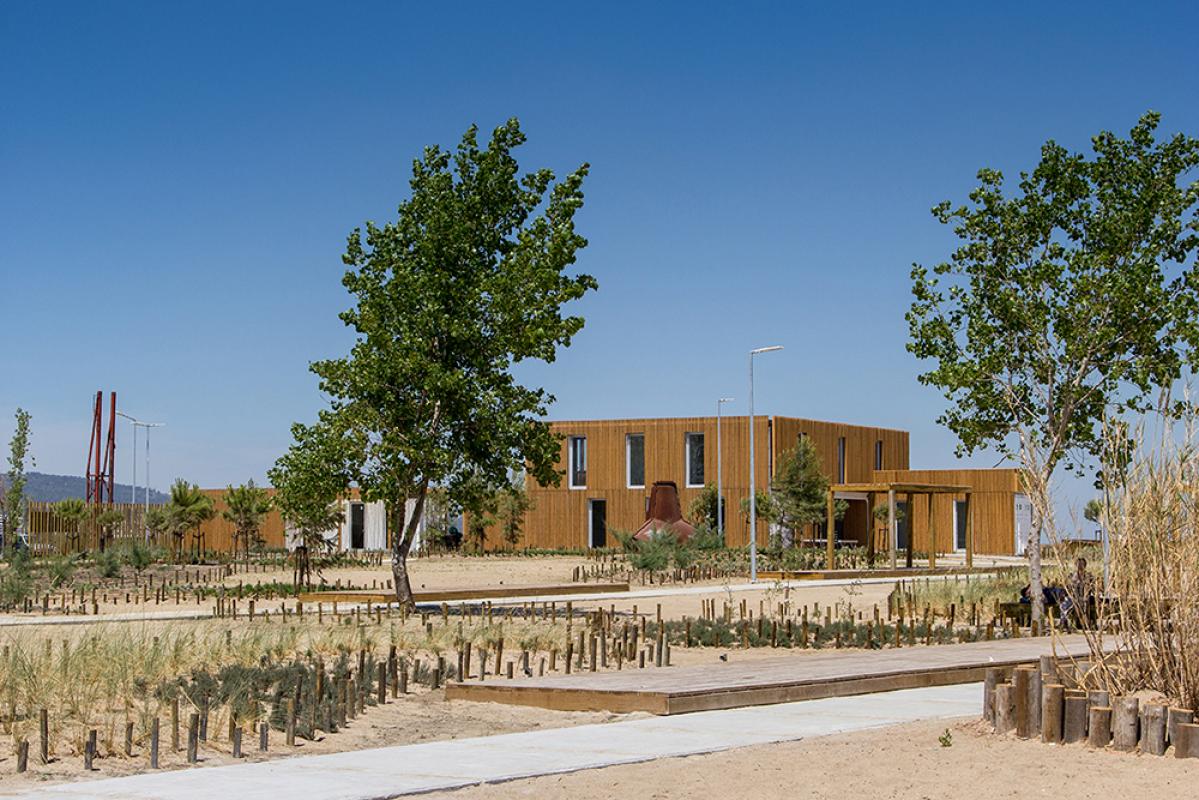Tagus Linear Park
The Tagus Linear Park is an area of 150 000 sq m that was conquered by the surrounding communities to the industrial private sector and was felt as a democratic intervention by those forever deprived of access to the River. It is a space of freedom in the sense that, for the first time, the adjacent urban communities linked to industrial work in the outskirts of Lisbon were given the opportunity for a direct contact to the river for recreation and leisure. The riverside area, until recently blocked by large industrial lots is now opened for all people. People from all ages and from diverse social and cultural backgrounds are invited to come in and enjoy from a diverse palette of choices: from sports, fishing, walking and cycling to environmental education, or simply to contemplate the landscape. The objective was rethinking urban public multifunctional space in a complex, unexpected, almost improbable universe of urban, industrial, agricultural and natural landscape, in order to provide social, recreation and ecological services. Aiming to keep the ‘essence of the place’ the team designed a unique greenway, grounded in landscape’s natural and cultural features, with a multitude of recreational and leisure options, safeguarding the existing natural systems and promoting the ecological regeneration of damaged areas. The Park combines two different typologies of spaces: A single multifunctional area named ‘PRAIA DOS PESCADORES’ (FISHERMEN’S BEACH), set by the riverside within a former sand deposit, and 6 km of PEDESTRIAN TRAILS associated with dirt roads, waterlines banks (streams and drainage ditches), which converge to Praia dos Pescadores, coming from urban and natural areas. The connection between the ‘beach’ and natural areas is made through a 700m long raised wooden path by which a Bird Observatory built from old pallets can be reached. Light power is 100% solar.
![[Topiaris, Landscape Architecture - Tagus Linear Park - COVER IMG]](https://architectureprizecom.s3-us-west-2.amazonaws.com/uploads/large/large_1467646514.jpg)



